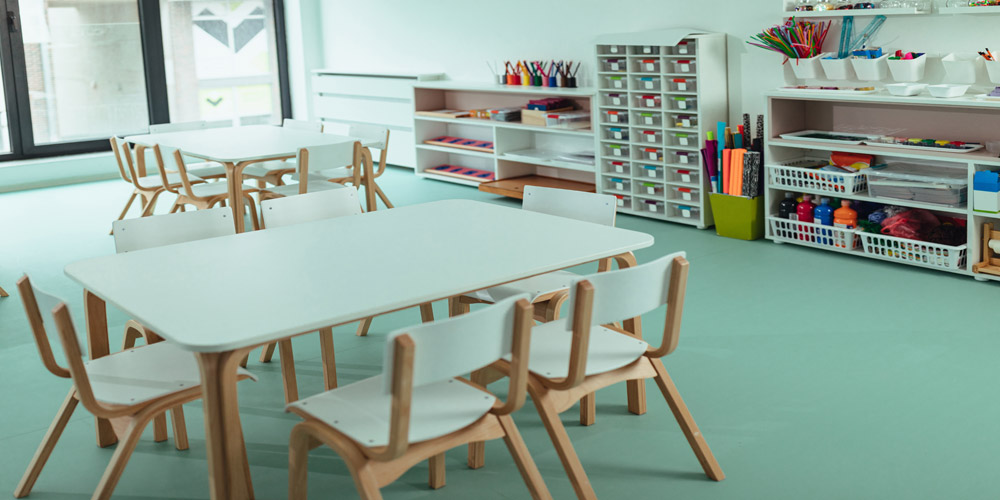Revolutionizing Education ~ Modular Buildings and Classrooms
In the ever-evolving landscape of education, the traditional brick-and-mortar structures are undergoing a transformative shift. The advent of modular buildings and classrooms represents a paradigm shift in the way we conceive and construct educational spaces. This innovative approach combines sustainability, flexibility, and cost-effectiveness to meet the dynamic needs of 21st-century learning environments.
I. Understanding Modular Buildings:
Modular buildings are prefabricated structures that are constructed off-site in modules or sections and then transported to the intended location for assembly. This construction methodology deviates from the conventional on-site construction process and offers a range of benefits. The modules are manufactured in a controlled environment, ensuring precision and efficiency. This approach significantly reduces construction time, minimizes waste, and provides a level of flexibility that is crucial in the ever-changing educational landscape.
II. Benefits of Modular Classrooms:
a. Speed of Construction: Modular classrooms boast a rapid construction timeline compared to traditional buildings. The off-site manufacturing process allows for simultaneous site preparation and module construction, drastically reducing the overall construction period. This speed is particularly advantageous for schools facing time constraints or those in need of swift expansion.
b. Cost-Effectiveness: The controlled environment of a modular construction facility enables better cost control. Reduced labor costs, minimized material waste, and faster construction times contribute to significant cost savings. Educational institutions can allocate their resources more efficiently, channeling funds into enhanced educational programs or additional facilities.
c. Flexibility and Scalability: One of the key advantages of modular classrooms is their inherent flexibility. The modular design allows for easy expansion or modification, adapting to the evolving needs of educational institutions. Schools can add classrooms, laboratories, or other facilities without the disruption typically associated with traditional construction.
d. Sustainability: Modular construction aligns with the growing emphasis on sustainability in the construction industry. The controlled manufacturing process minimizes waste, and the ability to repurpose or relocate modules reduces the environmental impact. Additionally, many modular buildings incorporate energy-efficient features, further promoting eco-friendly practices.
III. Challenges and Solutions:
a. Perception and Aesthetics: One of the challenges facing modular classrooms is the perception that they may lack the aesthetic appeal of traditional buildings. However, advancements in design and technology are addressing this concern. Architects and designers are incorporating innovative aesthetics to create visually appealing modular structures that blend seamlessly with their surroundings.
b. Regulatory Compliance: Adhering to local building codes and regulations can be challenging for modular construction. However, manufacturers are increasingly collaborating with regulatory bodies to ensure that modular buildings meet or exceed safety and compliance standards. Education stakeholders should engage in thorough research and dialogue with local authorities to address regulatory concerns.
c. Long-Term Durability: Some skeptics question the long-term durability of modular buildings. However, when constructed with high-quality materials and in adherence to industry standards, modular structures can demonstrate durability comparable to traditional buildings. Regular maintenance and proper care are essential to ensuring the longevity of modular classrooms.
IV. Real-World Applications:
a. Temporary Classrooms: Modular classrooms are particularly well-suited for addressing temporary space needs in educational institutions. As schools experience fluctuations in student enrollment or undergo renovation projects, modular classrooms offer a practical and temporary solution.
b. Remote and Challenging Locations: In areas where traditional construction may be logistically challenging, such as remote or environmentally sensitive locations, modular buildings provide a viable alternative. The ability to transport prefabricated modules to these areas facilitates the establishment of educational facilities where they are needed most.
c. Emergency Response and Disaster Relief: Modular classrooms have proven invaluable in emergency response situations and disaster relief efforts. The speed of construction allows for the rapid deployment of educational facilities to support displaced students and communities affected by natural disasters.
V. Case Studies:
a. Green School in Bali, Indonesia: The Green School in Bali is a pioneering example of sustainable and modular construction. The school’s innovative bamboo architecture, combined with modular classrooms, has created an eco-friendly and visually stunning learning environment. The success of the Green School has inspired similar projects worldwide.
b. California’s Growing Schools Program: In response to the rapidly increasing student population, California’s Growing Schools Program utilized modular classrooms to address the urgent need for additional learning spaces. The program successfully delivered cost-effective, scalable, and energy-efficient solutions to accommodate the state’s growing student body.
VI. The Future of Modular Classrooms:
As technology advances and society places greater emphasis on sustainability, the future of modular classrooms looks promising. The ongoing collaboration between architects, educators, and manufacturers will likely result in even more innovative designs, improved construction techniques, and enhanced sustainability features. As the education sector continues to evolve, modular classrooms will play a pivotal role in shaping the learning environments of tomorrow.
Modular Buildings and Classrooms in Education
Modular buildings and classrooms represent a transformative approach to educational infrastructure. Their benefits, including speed of construction, cost-effectiveness, flexibility, and sustainability, make them a compelling choice for modern educational institutions.
Overcoming challenges through advancements in design, technology, and regulatory compliance will further solidify the role of modular classrooms in revolutionizing education. As we witness the continued growth of this innovative construction method, it is clear that modular buildings are not just a temporary trend but a long-term solution that is reshaping the future of education.
